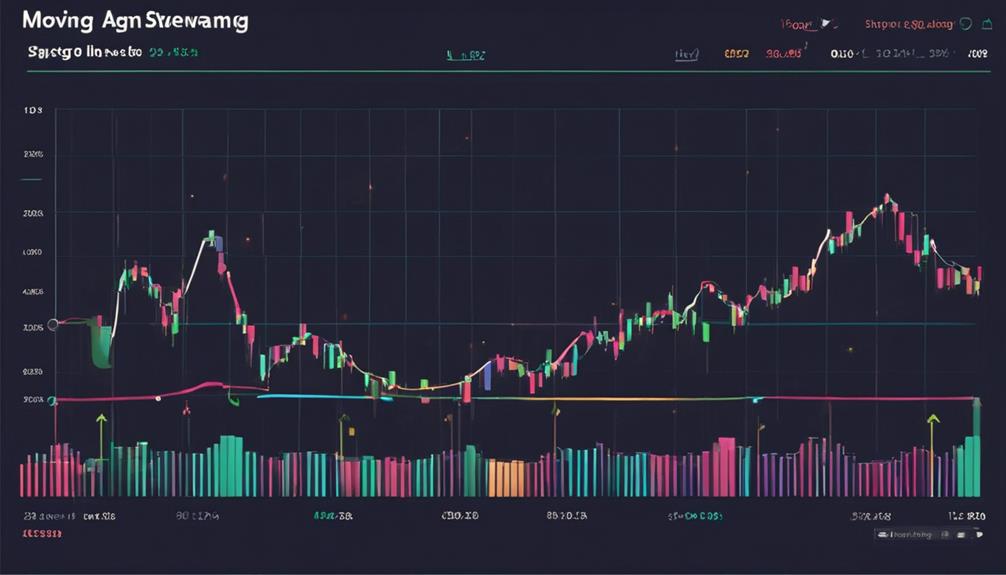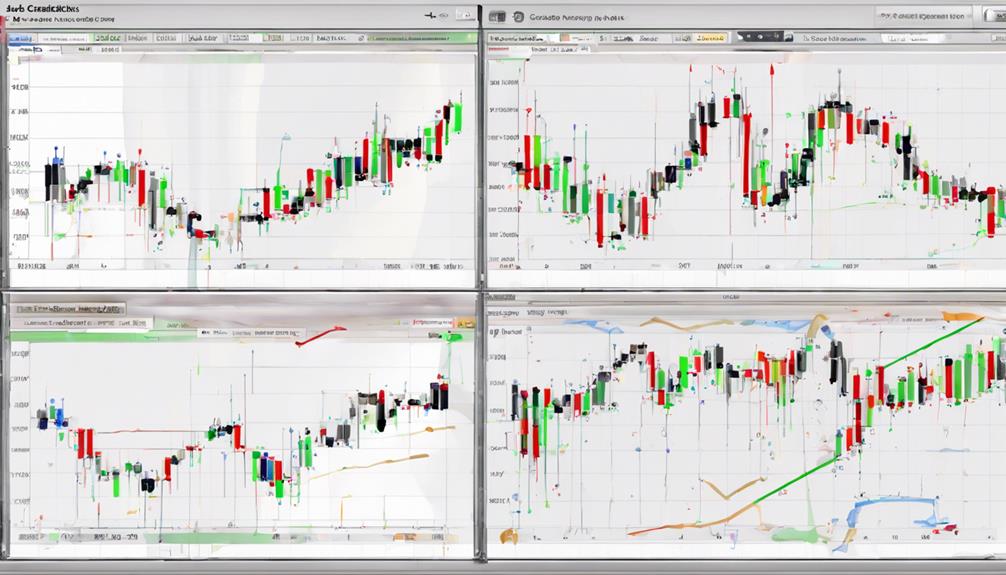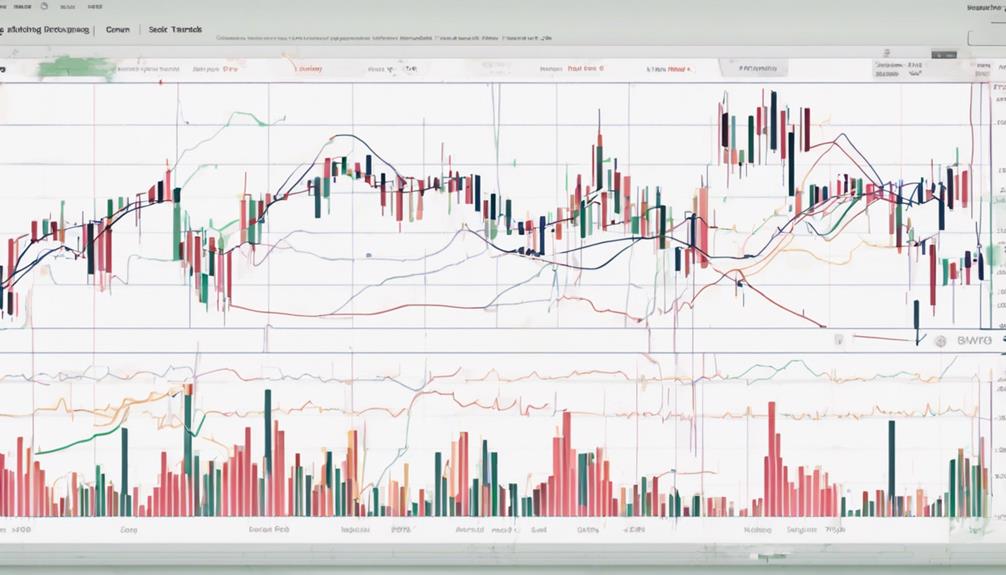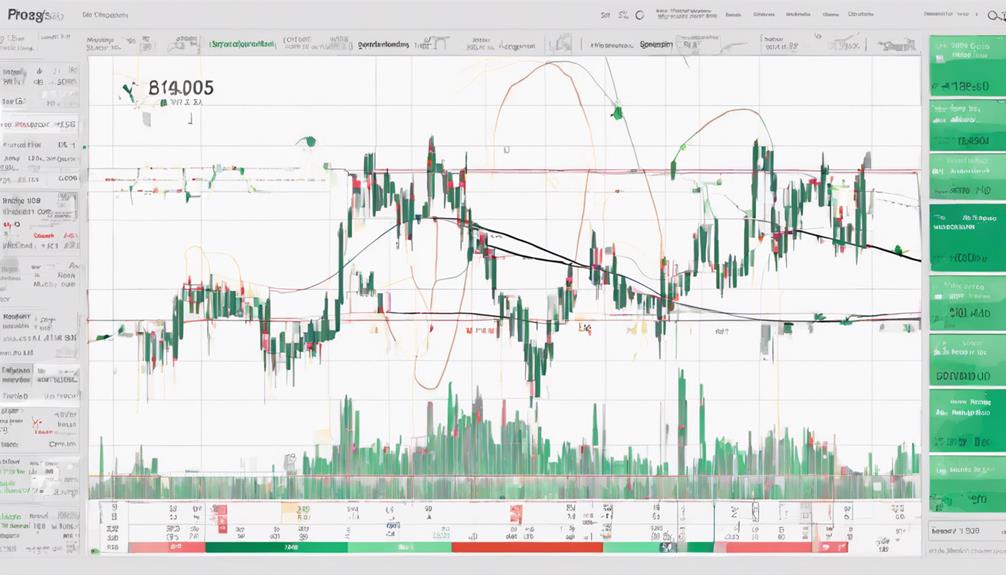Imagine moving averages as the steady rudder guiding your trading ship through the unpredictable seas of the market. They provide a sense of direction amidst turbulent price fluctuations, aiding you in making informed decisions.
But why exactly are these averages deemed essential in crafting successful trading strategies? Let's explore how these simple yet powerful indicators can significantly impact your trading outcomes and potentially transform the way you navigate the complexities of the financial markets.
Importance of Moving Averages
Moving averages play a crucial role in smoothing out price fluctuations and revealing underlying trends in the market. By using data from a specified time frame, these averages assist in price analysis on a trading chart. Traders benefit from the insights provided by moving averages, helping them identify potential entry and exit points in their trading strategies.
Analyzing the crossover points of these averages offers valuable information on changing market momentum, aiding traders in making informed decisions. Moreover, utilizing moving averages enhances risk management strategies by offering reference points for setting stop-loss orders. Through the flexibility of different types of moving averages like SMA and EMA, traders can adapt to various market behaviors effectively.
Types of Moving Averages

An essential aspect to consider when delving into trading strategies is understanding the various types of moving averages utilized in technical analysis. The Exponential Moving Average (EMA) reacts swiftly to recent price changes, making it ideal for short-term trend analysis.
On the other hand, the Simple Moving Average (SMA) smooths out price fluctuations by calculating the average closing price over a specified period, making it more suitable for long-term trend identification. EMA assigns higher weight to recent prices, while SMA treats all values equally.
Both EMA and SMA play a crucial role in technical analysis, aiding traders in identifying trends and determining support and resistance levels in the market. Differentiating between these moving averages can help you tailor your trading strategies based on short-term or long-term perspectives.
Strategies for Using Moving Averages

Utilizing moving averages in trading strategies enhances trend identification and aids in pinpointing potential entry or exit points in the market. Traders employ various strategies, such as crossover methods, where short-term moving averages crossing above or below long-term averages indicate buy or sell opportunities.
By utilizing moving averages, traders can filter out noise in price movements and focus on determining the trend direction accurately. This approach allows for a systematic analysis of price data and helps in effective risk management.
Additionally, understanding the relationship between different moving average lengths enables traders to assess trend strength systematically. Incorporating moving averages in trading strategies provides a structured method for interpreting price movements and making informed trading decisions.
Advantages of Incorporating Moving Averages

To fully grasp the benefits of incorporating moving averages into your trading strategies, understanding how these indicators smooth out price fluctuations over time is essential. Moving averages are widely used in technical analysis by technical traders to identify trends and potential entry and exit points in the market.
By smoothing out price action, moving averages help traders identify support and resistance levels, offering valuable insights into market dynamics. While they're considered lagging indicators, their ability to provide a clear depiction of the chart's time frame aids in making informed decisions within a trading strategy.
Incorporating moving averages can assist traders in effectively managing risk and enhancing the overall performance of their trading approach.
How Can Moving Averages Enhance Trading Strategies in Swing Trading?
Moving averages in swing trading can enhance trading strategies by providing clear signals for entry and exit points. Traders use moving averages to identify trends and make informed decisions about when to buy or sell. By analyzing these averages, traders can improve their chances of success in swing trading.
Common Pitfalls in Using Moving Averages

Common pitfalls often encountered when using moving averages in trading strategies include the generation of false signals during choppy market conditions.
Traders relying solely on simple moving average strategies may find them less effective in volatile or sideways markets where price data fluctuates frequently, leading to inaccurate signals. Additionally, moving averages may not always accurately identify support or resistance levels, as market prices can disregard these technical levels.
To mitigate these challenges, traders can consider adjusting the time frame of the moving averages to better suit the market conditions.
It's crucial to recognize that moving averages excel in trending markets but may fall short in other scenarios, necessitating a nuanced approach to their application to avoid common pitfalls.
How Do Moving Averages Impact Trading Strategies in Swing Trading?
Moving averages are a vital part of the moving averages swing trading concept. They act as trend indicators and help traders identify potential buying or selling opportunities. By smoothing out price fluctuations, these averages provide a clearer picture of overall market direction. Traders often use moving averages as dynamic support or resistance levels, aiding in decision-making and fine-tuning entry or exit points. Understanding how moving averages impact trading strategies is crucial for effective swing trading.
Frequently Asked Questions
Why Is Moving Average Important in Trading?
Moving averages are important in trading because they smooth out price fluctuations, aiding in trend identification. They offer crucial support and resistance levels for entry and exit points while confirming trend directions for clearer decision-making.
What Is the Advantage of Using Moving Average Method?
Using moving averages provides a clear trend overview, aiding in decision-making. Smoothing price data allows easy trend identification. Traders rely on this method to reduce market noise, spot trends, and determine entry/exit points effectively.
What Is the Moving Average in Trading Strategies?
In trading strategies, a moving average is a trend-following tool that smooths price data over a set period. It helps you identify trend direction and potential support/resistance levels, aiding in decision-making for market entries/exits.
What Is the Most Important Moving Average in Trading?
The most crucial moving average in trading is the 200-day MA. Crossing above signals bullish trends, while below indicates bearish movements. Analysts and investors heavily rely on it for market direction, support, and resistance levels.
Conclusion
In conclusion, moving averages play a crucial role in trading strategies by smoothing out price data and helping traders identify trends and reversal points effectively.
Did you know that over 70% of professional traders use moving averages as part of their technical analysis toolkit?
This statistic showcases the widespread adoption and reliance on moving averages in the trading community, highlighting their importance in making informed decisions and navigating market volatility.


